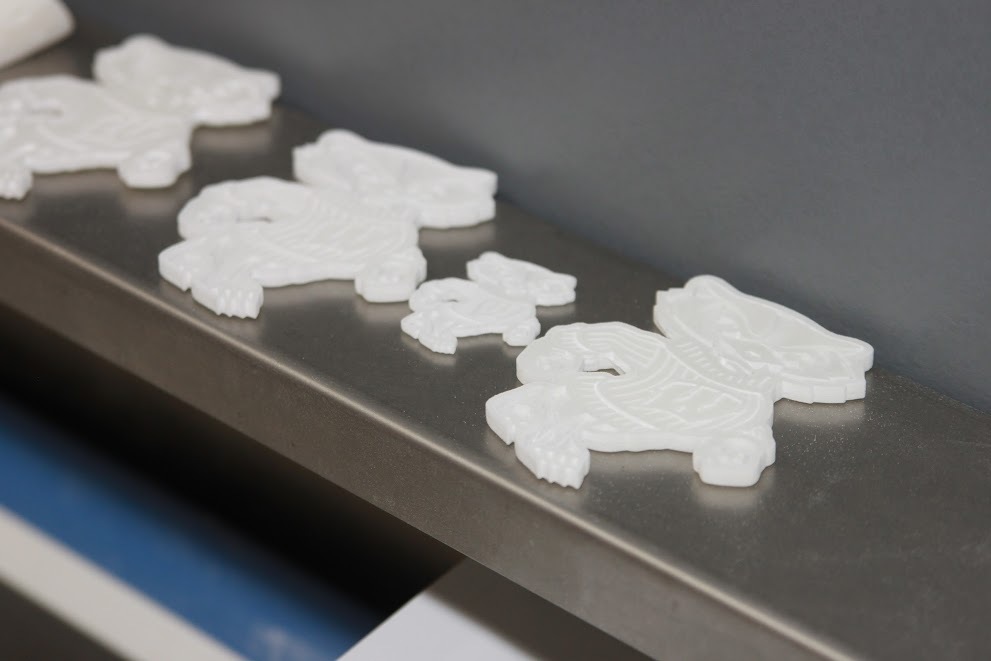Informatics of ‘making’ aims to unite computing, materials and manufacturing advances

The promise of novel processes like 3D printing, currently used to produce small objects (above) but with the potential to go much bigger, could be amplified through a new discipline researchers are developing that combines manufacturing, advanced materials and powerful new computing capabilities.
Photo: Mark Riechers
Materials science, computing and manufacturing have all evolved into formidable forces on their own in recent years. Support for materials innovation is surging; computing and information are taking on an ever more powerful role in research; and American manufacturing faces a transformation at the hands of the “maker” movement and of major government and industry initiatives.
If only there were a computational framework to unite these distinct but interdependent fields. Researchers from UW–Madison and Drexel University are pursuing the building blocks for a rich set of computational tools that would allow manufacturers to account for the material complexity of a sophisticated product within a single computer model.
Vadim Shapiro and William Regli plan to do just that with an $800,000 grant from the National Science Foundation. In the process, they want to establish a new discipline they call the “informatics of making.”

Vadim Shapiro
“We’re not just talking about computing systems, but specifically computing systems in support of material activities,” says Shapiro, the Bernard and Frances M. Weideman professor of mechanical engineering and computer sciences at UW–Madison. “Moving forward requires computational models that know about geometry, materials and physics.”
Shapiro will contribute to this research his expertise in geometry, mathematical models and computer models. Regli will draw on his interdisciplinary experience with information systems, knowledge representation and archives.
Regli, a professor of engineering and computer science at Drexel, has long worked at the intersection of computer science and manufacturing. He says that as the 3D printing world begins to buzz about such huge possibilities as printing an entire house, it’s becoming clear that computational design tools need to catch up to advances in materials science.
“If I want to design an object that has variable material properties, on a 3D printer, the tools just don’t exist,” says Regli, associate dean of research at Drexel’s iSchool, College of Information Science & Technology. “What you’re making is more than a shape; it’s how the shape responds to its physical environment — for example, how it acts under certain forces.”
Currently, when 3D printer users exchange data on an object they’re trying to print, they use what Shapiro refers to as a “dumb” file, one that simply transmits an approximate shape of an object. Shapiro believes the next step is to create models and languages that also include information about the materials, physics and design intent.
“If successful, this research should also lead to systematic re-examination of how design and manufacturing are taught and practiced at all levels.”
Vadim Shapiro and William Regli
“It’s almost at the point where you can interchangeably think of materials as bits of information,” Shapiro says.
Regli, whose primary background is in computer science, says the main challenge of the research is to find the right abstractions with which to unite principles of design, materials and computing. “We have to figure out how to relate the representations for material and behavior from an engineering standpoint to the computational representations,” he says.
If the researchers can accomplish that, it will establish a framework in which manufacturers and engineers can build powerful new tools that harness the potential of three fast-rising scientific disciplines.
The scope of the grant is to create an abstract, foundational link between computers and materials and their behaviors, but it aims for profound impact.
“If successful,” Shapiro and Regli wrote in their grant proposal, “this research should also lead to systematic re-examination of how design and manufacturing are taught and practiced at all levels.”
—Scott Gordon
Tags: engineering, manufacturing



